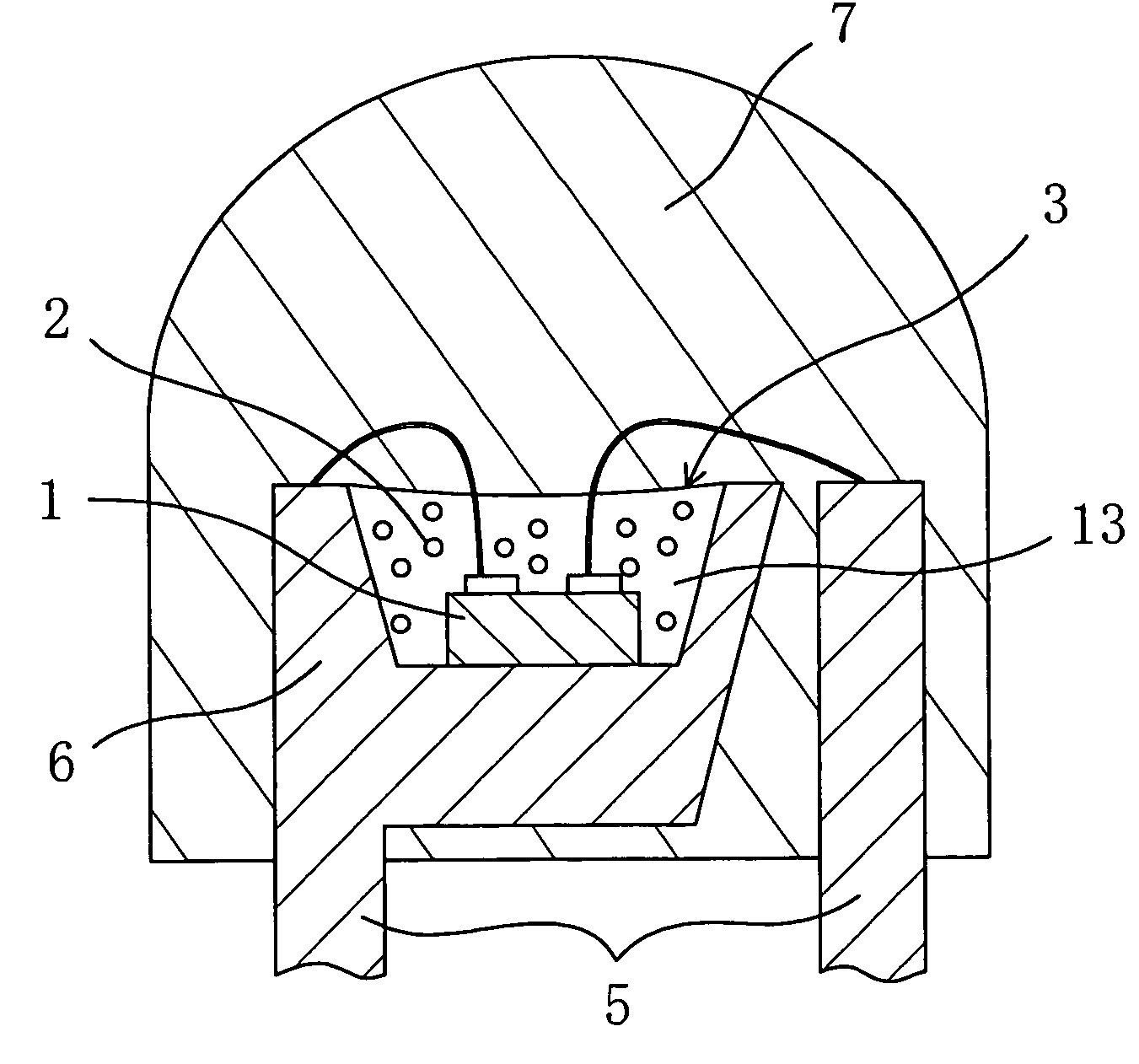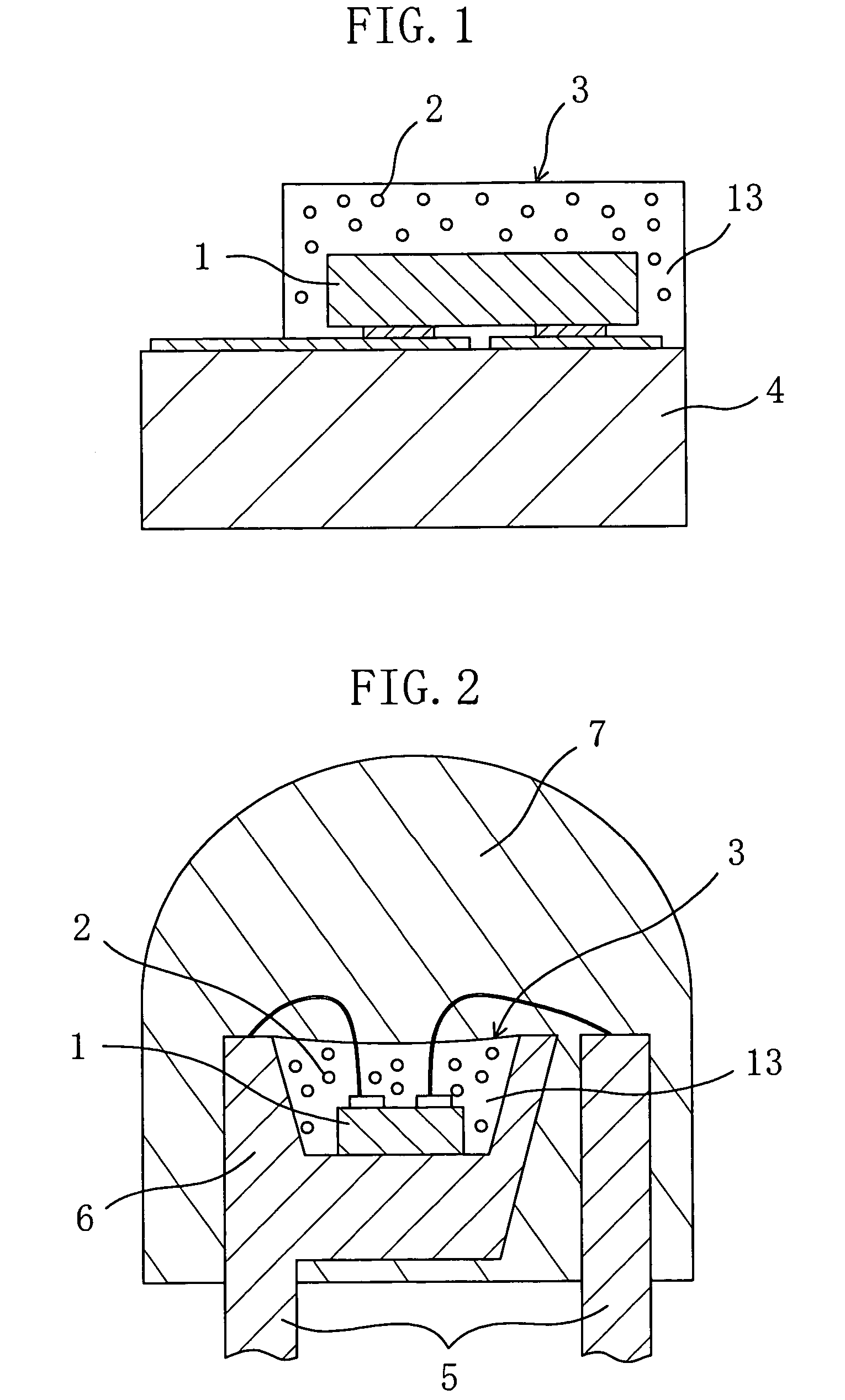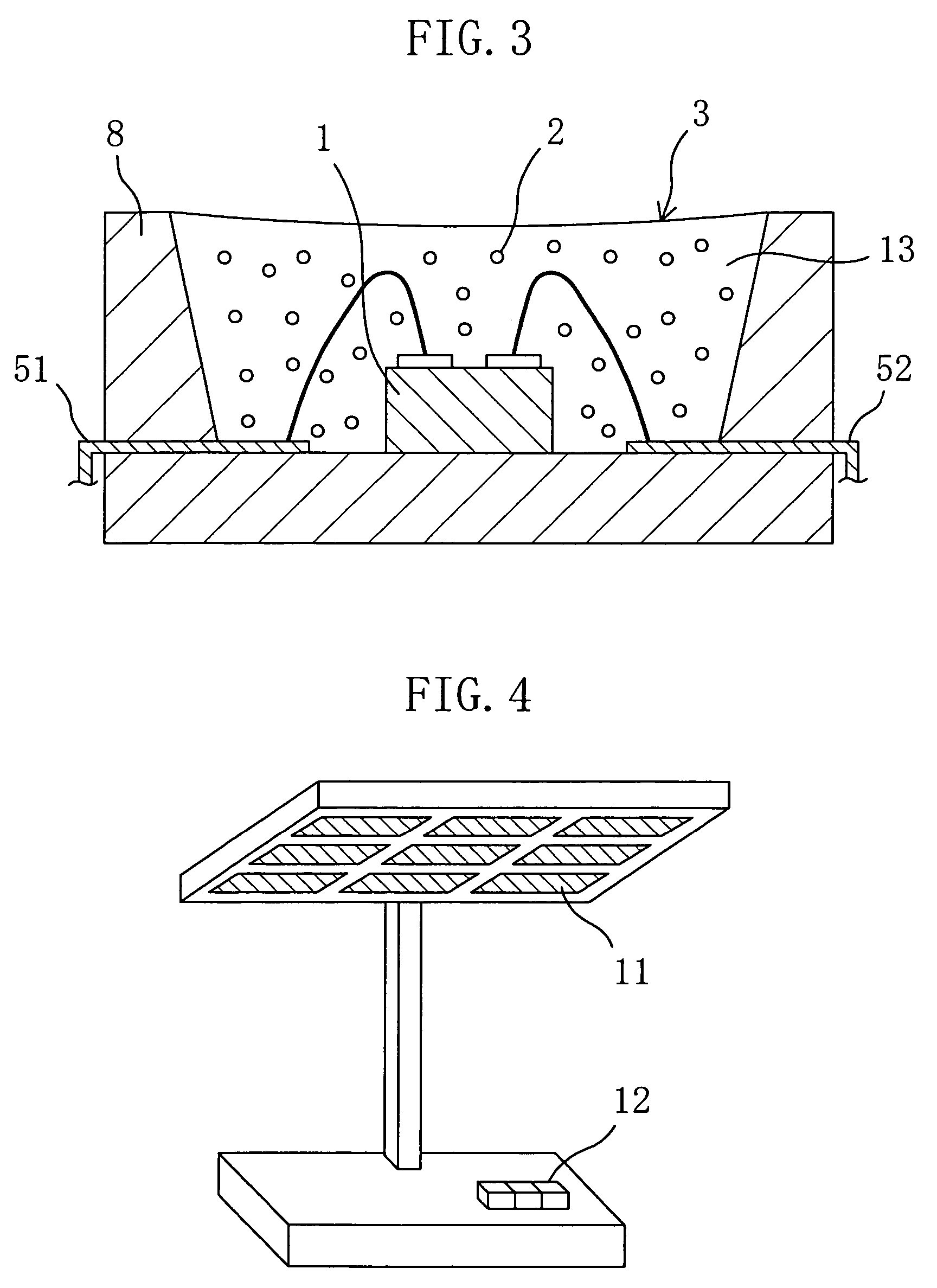Light-emitting semiconductor device, light-emitting system and method for fabricating light-emitting semiconductor device
a technology of light-emitting semiconductor and light-emitting system, which is applied in the direction of semiconductor devices for light sources, discharge tube luminescent screens, lighting and heating apparatus, etc. it can solve the problems of low luminescence performance of the luminescent layer, uneven distribution of phosphor particles in the package, and inability to form structures in reality, etc., to achieve excellent color tone, increase the luminous intensity of yellow light, and cross-sectional area
- Summary
- Abstract
- Description
- Claims
- Application Information
AI Technical Summary
Benefits of technology
Problems solved by technology
Method used
Image
Examples
embodiment 1
[0165]Hereinafter, a first embodiment of the present invention relating to a light-emitting semiconductor device and a method for suppressing color unevenness in the light-emitting semiconductor device will be described with reference to the drawings.
[0166]FIG. 1 is a vertical cross-sectional view showing a first exemplary light-emitting semiconductor device as a relatively typical example of this embodiment. As shown in FIG. 1, the first exemplary light-emitting semiconductor device is a chip-type light-emitting semiconductor device including: a substrate 4 (a submount element) functioning as a Zener diode; a flip-chip-type blue LED 1 mounted on the substrate 4 to be electrically connected to the Zener diode in the substrate; and a luminescent layer 3 encapsulating the blue LED 1 and made of a mixture of yellow / yellowish phosphor particles 2 and a base material 13 (a translucent resin). The blue LED 1 has a main light-extracting surface facing upward as shown in FIG. 1. The lumines...
embodiment 2
[0240]Now, an embodiment of a light-emitting system according to the present invention is described with reference to the drawings.
[0241]Various kinds of displaying systems using light-emitting semiconductor devices (e.g., LED information display terminals, LED traffic lights, LED stoplights of vehicles and LED directional lights) and various kinds of lighting systems (e.g., LED interior / exterior lights, courtesy LED lights, LED emergency lights, and LED surface emitting sources) are herein defined broadly as light-emitting systems.
[0242]FIGS. 4 through 6 are perspective views respectively showing examples of a light-emitting system according to a second embodiment of the present invention. FIG. 4 is a perspective view schematically showing a configuration of a desk-lamp-type lighting system as a first exemplary light-emitting system of the present invention.
[0243]As shown in FIG. 4, the first exemplary light-emitting system includes: a lighting unit in which a large number of light...
embodiment 3
[0428]In this embodiment, a method for forming a thin luminescent layer is described. According to this embodiment, yellow / yellowish phosphor particles which are expressed by the chemical formula (Sr1−a1−b1−xBaa1Cab1Eux)2SiO4 where the values a1, b1 and x are in the ranges 0≦a1≦0.3, 0≦b1≦0.8 (more preferably 0≦b1≦0.6) and 0<x<1, respectively, and which emit light having an emission peak in the wavelength range from 550 nm to 600 nm, both inclusive, are densely distributed near a light-emitting diode, so that a luminescent layer is made thin, i.e., the thickness through which light passes is reduced, thereby reducing attenuation of light. For example, this embodiment is for a method for fabricating a light-emitting semiconductor device in which a luminescent layer has a substantial thickness in the range from 50 μm to 1000 μm, both inclusive, where a light extraction surface of a blue-light-emitting device is located.
[0429]Hereinafter, examples of the fabrication method will be descr...
PUM
 Login to View More
Login to View More Abstract
Description
Claims
Application Information
 Login to View More
Login to View More - R&D
- Intellectual Property
- Life Sciences
- Materials
- Tech Scout
- Unparalleled Data Quality
- Higher Quality Content
- 60% Fewer Hallucinations
Browse by: Latest US Patents, China's latest patents, Technical Efficacy Thesaurus, Application Domain, Technology Topic, Popular Technical Reports.
© 2025 PatSnap. All rights reserved.Legal|Privacy policy|Modern Slavery Act Transparency Statement|Sitemap|About US| Contact US: help@patsnap.com



